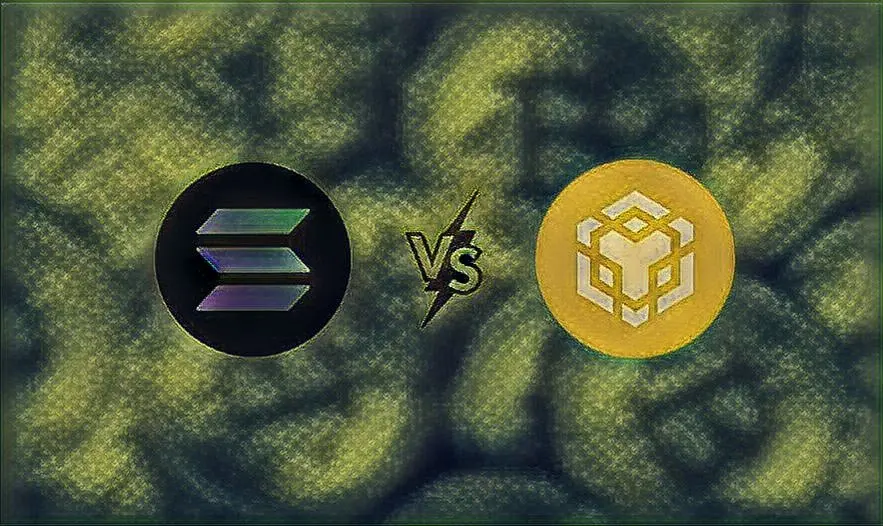O3 Swap: One of the solutions to the paradox of multi-chain coexistence and liquidity fragmentation
This article is sourced from the official O3 Swap.
With the rise of new public chains like Solana and Conflux, and the resurgence of older public chains like Neo, it seems that the competition among public chains has entered a multi-chain coexistence pattern. This pattern is similar to the second quarter of 2018, yet there are many differences.
The explosion of public chains three years ago was largely driven by the ability to achieve higher valuations in the capital market, and people's overly high expectations for performance. However, through a cycle of bull and bear markets, the market gradually provided an answer to public chains: users do not care about the performance of the public chain itself; the ecosystem is the basis for survival. The growth process of the ecosystem can be attributed to the reliance of developers and the market on spiritual leaders.
Taking the previous generation Ethereum challenger public chain Neo as an example, Da Hongfei is its spiritual totem, and he still enjoys a reputation in blockchain communities both domestically and internationally. The Solana ecosystem, which has recently begun to show explosive growth, relies on the influence and financial power accumulated by SBF during the DeFi boom over the past year to attract developers and users. These public chains with explosive ecosystems and influential key figures will inevitably coexist and thrive alongside EVM ecosystem public chains, and to some extent, promote innovation mutually.
However, the curtain of fierce competition in a multi-chain coexistence world has just begun to rise. With the DeFi boom continuing for a year, the gathering of liquidity has led to a qualitative change in ecosystems. When Pancake surpassed Uniswap in TVL, it facilitated the dual value discovery of BNB and CAKE. To some extent, we can call this a victory for EVM, but it is undeniable that liquidity has also differentiated within the EVM ecosystem. A portion of the liquidity that was originally concentrated on Ethereum has flowed to the BSC chain due to Binance's backing and lower fee advantages.
In contrast to public chains like Solana, the issuance of USDT on-chain can be seen as the starting point for the explosive growth of the Solana ecosystem. With USDT as the base, coupled with the rise of cross-chain bridges like Wormhole, the introduction of off-chain assets into Solana will become more convenient. At the same time, the explosion of on-chain native assets brought about by ecosystem prosperity will further drive the increase in liquidity.
Based on the above situation, liquidity will inevitably present a differentiated state with the coexistence of multi-chain ecosystems. Currently, with a large influx of funds into digital currencies, the dispersion of liquidity will not have too much impact on on-chain ecosystems, as for most investors and users, liquidity is sufficient for on-chain operations.
However, once a bear market arrives at some point in the future, asset prices decline, and liquidity begins to withdraw, on-chain protocols that heavily rely on liquidity will be the first to be impacted. This will directly undermine the foundation of the DeFi ecosystem. What’s more frightening is that at that time, different public chain ecosystems’ DeFi protocols will all have a strong reliance on liquidity, and the prosperity of public chains may actually have a counterproductive effect on "liquidity dispersion." This seems to present an unsolvable paradox: multi-chain coexistence and the prosperity of each ecosystem lead to liquidity dispersion; while concentrated liquidity gathered on a few protocols on a single chain cannot create a prosperous multi-chain ecosystem.
From the market, we can attempt to find solutions to this paradox.
Firstly, there are cross-chain solutions. I will narrow the definition of cross-chain solutions to heterogeneous chain consistency cross-chain solutions, meaning: existing public chains or layer 2 do not need to change their current structure to adapt to a specific cross-chain protocol, yet can still achieve inter-chain communication and consistency of transactions, as well as liquidity consistency. According to the definition of Web3 (or the next generation of the internet), liquidity will be neutral after the cross-chain infrastructure is improved, not relying on any public chain and ecosystem, but shared by all public chains and ecosystems.
A relatively mature solution at present is ThorChain, and I will not elaborate on its specific mechanisms for now. Its token RUNE has also completed value discovery over the past 18 months, but its approach has certain universal thresholds. The threshold lies in that Thorchain's cross-chain implementation requires deploying liquidity to mainstream swap protocols on each chain. Although this is seamless for users, it poses higher demands on the project parties themselves.
On the other hand, the O3 Swap protocol, which is built on the PolyNetwork cross-chain protocol for inter-chain native asset swaps, completely avoids these thresholds, making cross-chain trading more convenient and simple. O3 will also soon launch multiple platform IDOs and an ITO based on MASK Network.
O3 adopts a more convenient approach to solve liquidity consistency by deploying aggregator protocols on mainstream protocols of mainstream public chains to read quotes. It utilizes a high-performance chain on PolyNetwork for stablecoin exchanges, thus achieving native asset exchanges from Chain A to Chain B. For example, users can exchange ETH on Ethereum for BNB in BEP-20 standard on BSC through the interface of o3swap.com.

The second solution is a relatively less universally applicable method, which is synthetic assets. The advantages and disadvantages of synthetic assets are equally obvious. Their advantage is that a single asset can create liquidity for multiple assets, as strong as Synthetix, which has become a protocol covering the entire market, including spot/leverage/options, etc. The Mirror protocol on the Terra chain is also replicating a similar path. Synthetic asset protocols can maintain liquidity even when external liquidity shrinks and fragments, to some extent freeing DeFi protocols from their loyalty dependence on liquidity.
Similarly, perpetual contract protocols like Perpetual Protocol can leverage their advantages when liquidity shrinks in a bear market. Investors in a bear market tend to prefer leverage and contract products when market volatility is low. The liquidity of perpetual protocols is virtual, and the assets traded in AMM are synthetic assets minted from real collateral multiplied by leverage. However, the disadvantage of synthetic assets is that due to the fragmentation from external liquidity, they overly concentrate and lack the "neutral" liquidity property of cross-chain solutions.
As the DeFi world enters a stage of micro-innovation, the ways of liquidity will inevitably become more diverse. Perhaps in the future, we will see the next wave of innovation focused on solving the issue of liquidity dispersion. At this stage, we maintain our expectations while staying vigilant.










